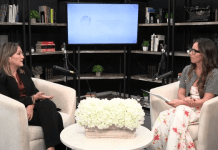|
Getting your Trinity Audio player ready...
|

As we enter the peak of hurricane season, I remember the last time we had hurricane force winds was in 2017. It was Hurricane Irma.
I remember vividly that I had moved to my daughter’s house, in an area called Shenandoah, which has a lot of trees – and therefore prone to have power outages. (I should have stayed in my Brickell condo, where power is provided via underground cables; but duty called and I wanted to help with the household containing the most numerous of my grandchildren, including one with special needs.)
My phone battery was dying and I decided to go out to my car and charge it with my engine power – which, parenthetically, has twice the amperage of the regular outlet in the house. I turned on the car radio and, all of a sudden, I heard a familiar voice. It was my son, then city commissioner, describing the scene of a construction crane that was loose and dangling in a most dangerous fashion. The man was out there, in 50 mile-an-hour winds, doing his best to convince people to evacuate from the vicinity of the dangling cranes.
I was proud of him for that, and even more for the regulations that had been put in place since the horrific days of 1992, when Hurricane Andrew devastated the southern regions of our county. Those regulations include more stringent buildings codes, more thorough evacuation plans and much better emergency systems of communications and rescue.
Hurricane preparedness is now a sophisticated triad that involves government, our principal utility and the average citizen. The advent of social media means that we communicate much better among the three components of that triad.
By way of illustration, in 2017 I had more or less mastered the art of texting and emailing my friends at FPL. Sitting on the county commission dais, during the aftermath of the hurricane, I was able to multi-task and connect with FPL; in about 95% of the cases, I was able to report back to residents that their power would be restored within 24 hours.
Forward to the present and 95% does not suffice. We want to get much closer to full restoration of power and of municipal services within hours of a hurricane. In the next article, I will outline what FPL is doing in terms of hurricane preparedness.
For now I want to stress that governments cannot do it alone. Those of us who live in high-rise condominiums and apartments must be mindful that shutters are invaluable because they keep the high winds from penetrating the entire structure, which makes it easy for windows, doors and even the roof to fly off.
Nursing homes by law must have fully inspected and working emergency power sources. Those who live close to the ocean should evacuate well in advance of a hurricane to avoid traffic jams; and those people who rely on electricity-dependent medical equipment must have a reliable backup power supply or a place to shelter when there’s an impending storm.
Thankfully, Miami’s poorer neighborhoods are mostly not located in low-lying areas. With improved building codes, their homes should resist the kinds of winds that accompany a major storm.
Rain water is another issue altogether; and while emergency pumps can help in selected areas, when storms coincide with king tides, flooding is going to happen – which makes it imperative to move people (and pets) to shelters and motor vehicles to areas of higher elevation.
In the second installment, I will concentrate on the measures taken by FPL to restore power when the inevitable tree branch knocks out a power line, or related equipment.
I should add that, because of FPL, the restoration forecast is very good for South Florida.





